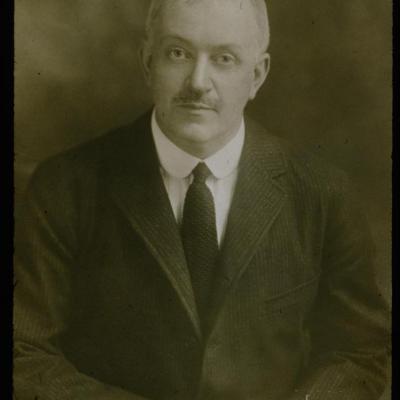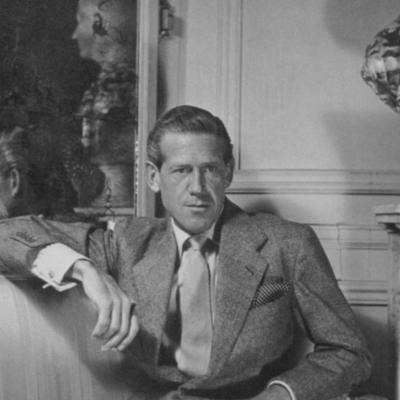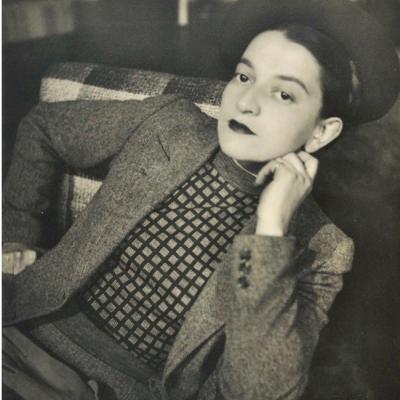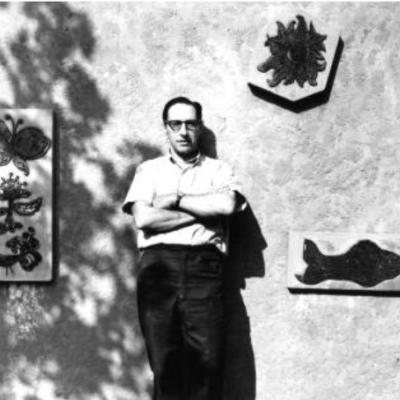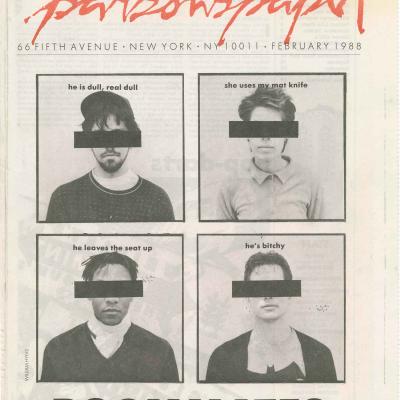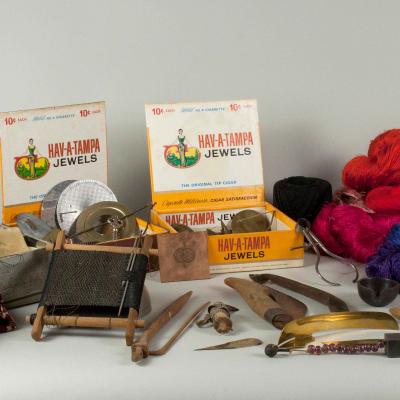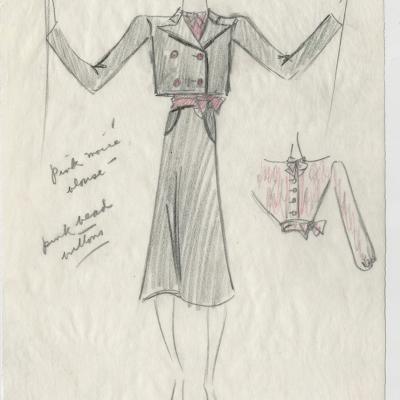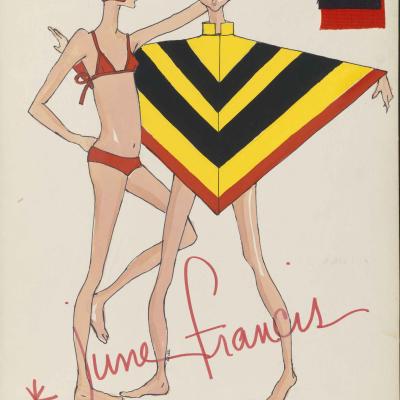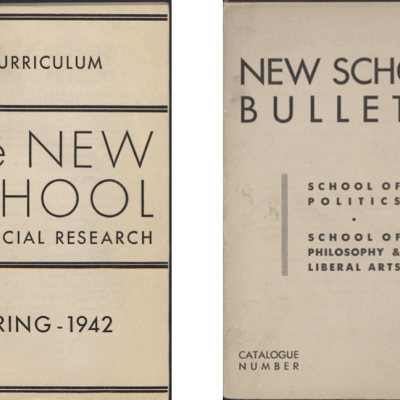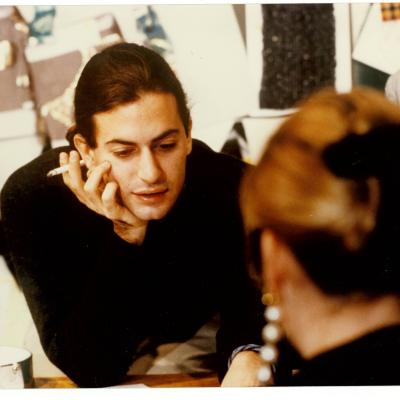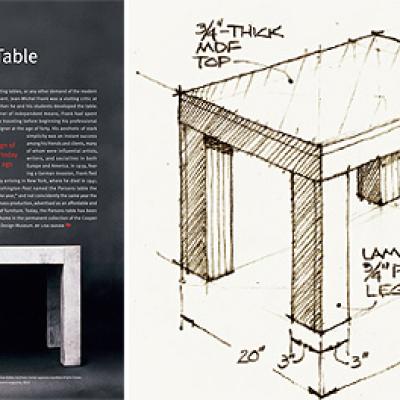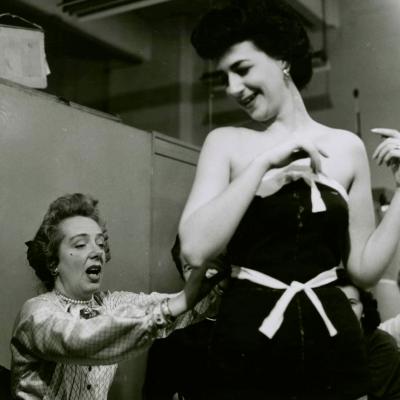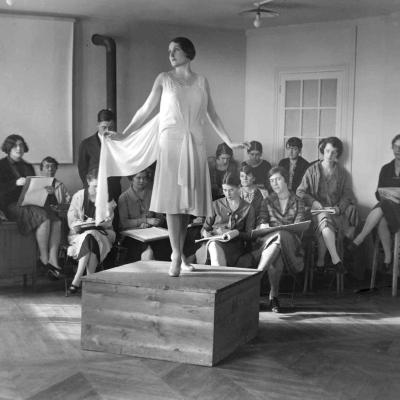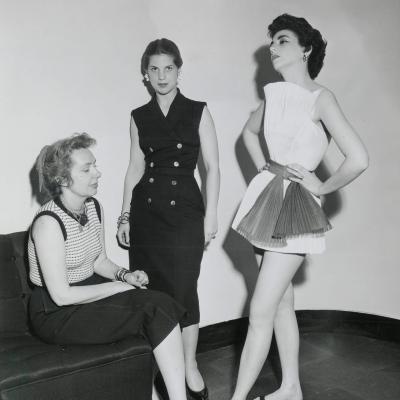Category: Design
The New Look: A Brief Survey of Typefaces & Logos Used at The New School
Editor’s note: the publication date of this article reflects the date this article was added to the new version of The New School Histories website, not the original publication date.
Frank Alvah Parsons
Frank Alvah Parsons was born April 1, 1866 in Chesterfield, Massachusetts. In 1901, after a period of European travel, Parsons moved to New York City where he pursued a degree in Art Education from Columbia University, graduating in 1905.
Van Day Truex: Designer and Catalyst
Even if you were Van Day Truex, the year was 1952 and you had just resigned as president of the Parsons School of Design to take a shot at a private life, you will still be stunned by the enormity of such carte blanche. Imagine its happening twice in a lifetime.
Van Day Truex
Van Day Truex was a Parsons Alum, and later became the Professor of Interior Design. He was on the administration at Parsons for over thirty years. You can read more about him here.
Women Enter the Hall of Fame
Cipe Pineles, the woman who broke the sex barrier at the Art Directors Club of New York by becoming a member, has also turned out to be the first woman to be inducted into its Hall of Fame.
Cipe Pineles
Cipe Pineles ( 1908-91) was an Austrian graphic designer who became one of the most influential designers of the twentieth century. In 1926, Cipe enrolled in the Pratt Institute where she studied fine art.
John Russo
John Russo was the director of the graphic design department at Parsons for many years. You can read more about him here.
ParsonsPaper: What Students’ Illustrations Can Tell You
ParsonsPaper was a monthly student-produced newspaper that ran from 1976 to 1990, and was sponsored by the Parsons Student Council. The newspaper featured news, opinions, poetry, artwork and photographs contributed by Parsons students, faculty and administrators.
Processing the Michael Kalil Collection
The Temple bell stops
But the sound keeps coming out of the flowers– Basho
Indoor / Outdoor Space Engineer
“I had always seen architecture as landscaping.”
– Michael Kalil, “Seed Vision” interview, 1990
Tools of the Trades
In archival terms, this assemblage of objects is known as “realia”- ie. three-dimensional objects (man-made or naturally occurring) such as coins, tools, and textiles and anything else that cannot be described as a document.
Jeremiah B. Lighter: The Central Margin of 20th Century Book Design
They say that history is made in the margins. Or maybe they don’t say that, exactly, but it’s probably true, and one of the joys of working as a processing archivist is having the chance to explore (and to help others explore) these marginal histories.
A Quick Dip into the History of Women’s Swimwear: Part 1
After a particularly cold winter here in New York, “swimsuit season” is officially upon us, leading millions of women to contemplate ways to reveal their skin while still maintaining a delicate balance of modesty, functionality, and style.
Historical Matchmaking
Being able to identify the origins and historical significance of archival materials is truly satisfying, and—dare I say it?—quite fun.
Michael Kalil: An Introduction
“We dream faster than we can build and we build faster than we accept. We therefore invent the notion of the future until we accept what we have built.” -MK
A Quick Dip into the History of Women’s Swimwear: Part 2
This is the second part of our series on the history of women’s swimwear. Click here to view Part 1!
The New School Catalogs over the Years
A collage of the covers of the New School catalogs over the years.
The Famous Faces of Parsons Fashion
The Parsons fashion design program has been the starting point for many of today’s industry leaders. Not many people know that before Tim Gunn was the host of Project Runway, he was the Chair of Fashion at Parsons School of Fashion.
The Parsons Table
The Parsons table is not a physical object but an idea, the platonic ideal of a table, characterized by a simple form, unadorned, adaptable to any material, with legs as wide as the tabletop is deep.
Art in Advertising
In the past, nations and people have given their thoughts and their feelings to the world in material things.
Art: Its Principles and Practice as Applied to Modern Life
Decided modifications of the National viewpoint on any subject are apt to come very gradually. Sometimes, however, a change takes place almost as rapidly as the opening of a flower over night, and an entirely new outlook is the result.
Architecture and Books
In spite of the radio and our national commitment to standardization and speed, we still need good books, and intelligent people want and read them.
Appreciation of Beauty Essential in Art
Broader every day grows the American’s conception of what art really is and of what it means to the social-economic questions arising daily. Art no longer finds its limits with the canvas of the artist painter, nor even is it confined to the “genuine antique” of a decade ago.
The Science of Uncertainty: The Potential Contribution of Design to Knowledge
Thought essentially as configuration or as disposition, though in ways that will have to be explored, design is difficult conceptually.
Dynamic Symmetry
Student notes and drawings.
Professionals as Professors: Fashion before 1950
The Fashion Design program at Parsons has always been known for its professors and mentors, and the professors have always been industry professionals who bring the students outside of the classroom and into the real world.
Art Models in the 1960s
Art models at The New School offer an insight to the changes, discrepancies, and happenings at the New School during the 1960s. The New School Archives provides us with records of letters, receipts, and work forms pertaining to the models during the period.
A Brief History of Fashion Design at Parsons from 1950
Throughout the history of the Parsons fashion department from 1950-present there have been many important events that have helped shape the fashion department into the prestigious program that it is today.
The India Report
The Government of India asked for recommendations on a programme of training in design that would serve as an aid to the small industries; and that would resist the present rapid deterioration in design and quality of consumer goods.

